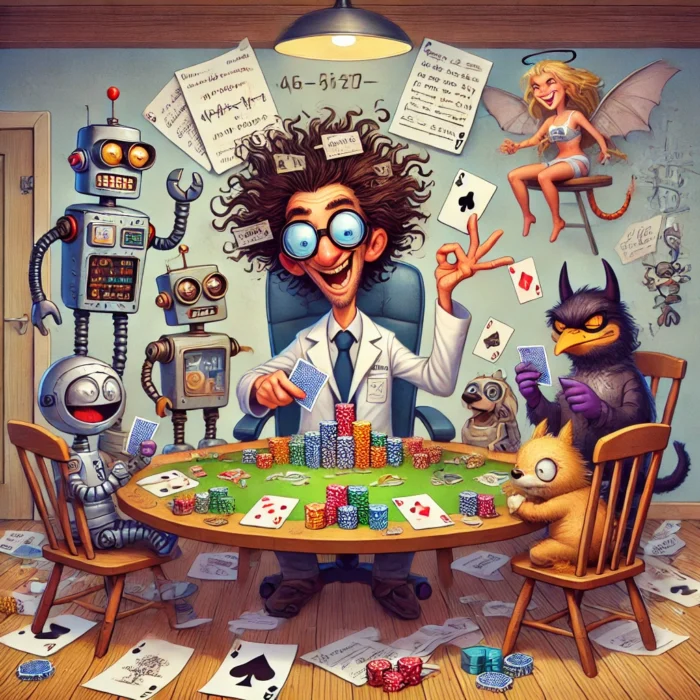
I clearly remember those days when I stumbled upon Richard Gibson’s Ph.D. thesis from the University of Alberta. It was a huge piece of work on regret minimization and strategy stitching in extensive-form games, as specified in the case of three-player limit Texas hold’em. Particularly, this one has a special place in my heart, as it coincided with the most intense time of learning and discovery in my journey to becoming a poker AI developer.
I was deep into my studies at the time, and therefore I didn’t have an understanding of the intricacies of game theory and how it applies in poker. Gibson’s work came in quite handy. His work on Counterfactual Regret Minimization and its application in poker gave a sound theoretical base that I desperately needed. His findings had enormous practical implications, and I was already excited to use these concepts in my own projects.
One evening, after a whole day of coding and reading, I came across Gibson’s Chapter 5. He proposed new algorithms like Probing, Average Strategy Sampling, and Pure CFR that sound not like theoretical novelties but very practical tools to reduce computation times and memory costs. This was a game-changer, considering that I had limited computational resources at my disposal.
His work gave me the impetus to try and build some of these algorithms into my own poker bot. I recall these nights of endless debugging time—a cup of coffee in one hand and Gibson’s dissertation in the other. There was one particular night when everything clicked. My bot, previously muddling through and unable to make profitable decisions, started to show improvement. It was as if Gibson himself was guiding my hand through all the intricacies of CFR and its applications.
The most rewarding thing was to test my bot in a small online poker tournament. Watching it sail through the hands with the newfound efficiency and strategy was indeed thrilling. After all those hours of study, coding, and an act of will, pure will—it all came to this.
It’s pretty amazing how far we have come in poker AI from those days. All those theories and algorithms that were simply living in the domain of academic papers are now part of advanced poker bots. And it all started with the inspiration that works like Gibson’s inspired.
Anybody interested in how the poker AI worked or how those strategies came to be should really dive into the resources, see what’s out there today. And if you ever get lost in the complexity, remember, every great journey in AI starts with a single line of code and a lot of curiosity.
Keep learning, keep coding, and maybe one day your project will be one of the trend-setters in the world of poker AI.
Best regards 😉

